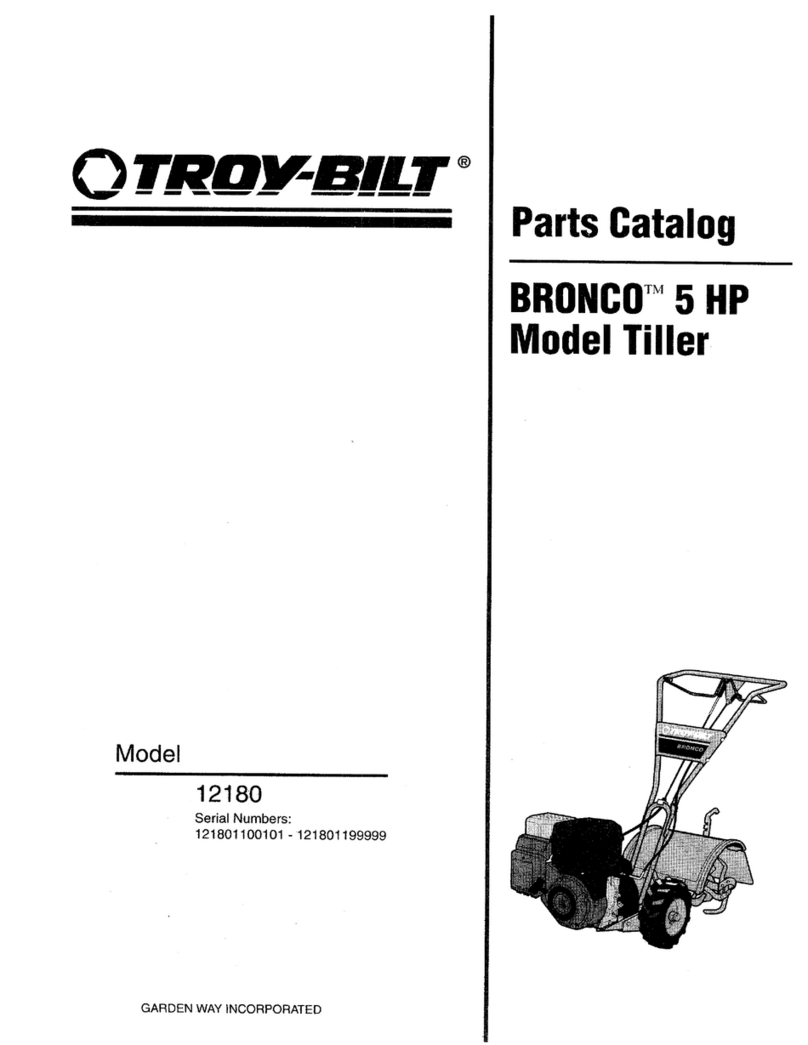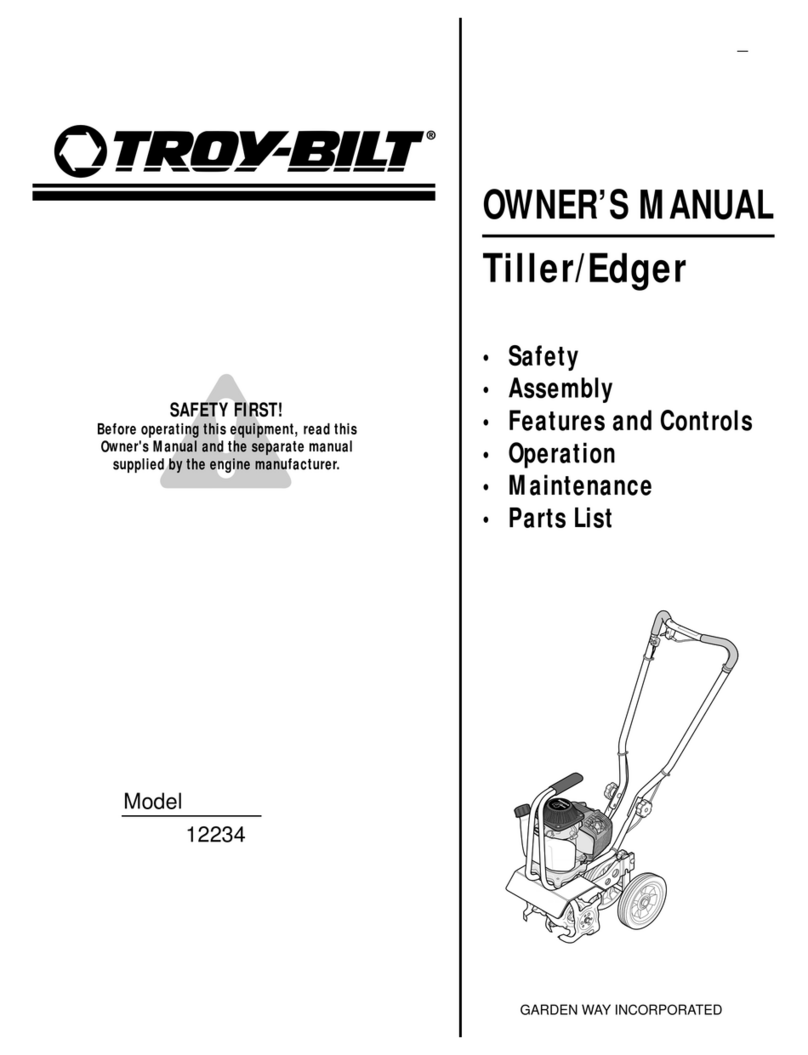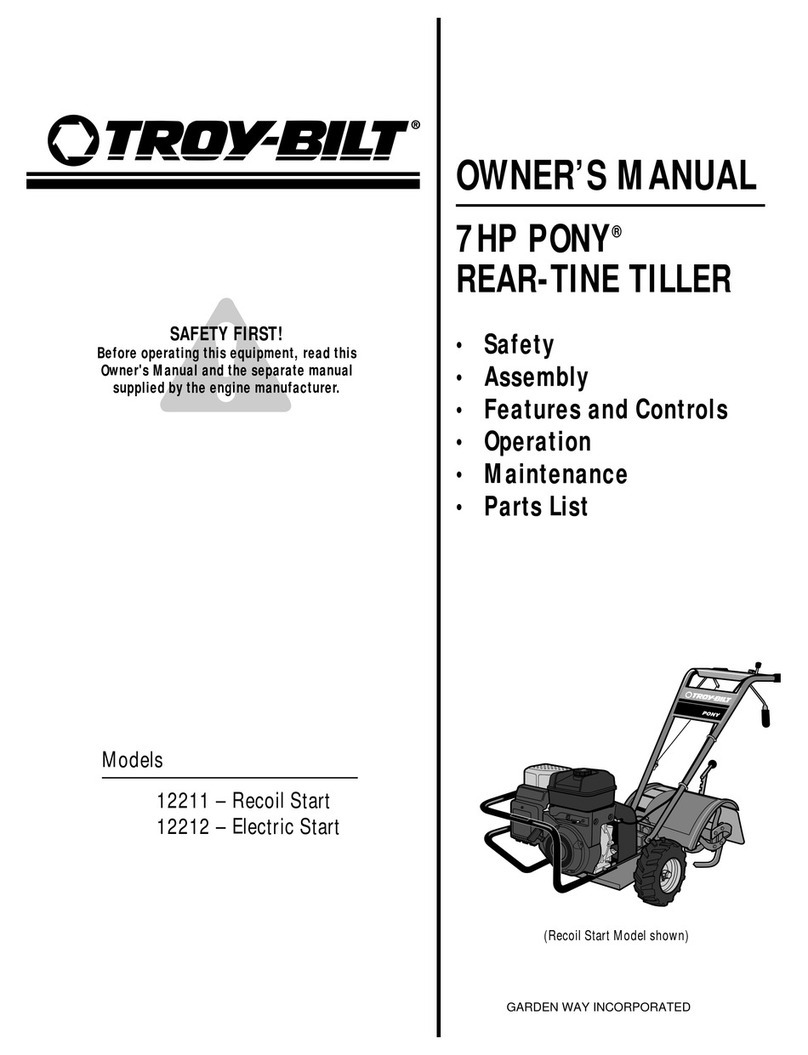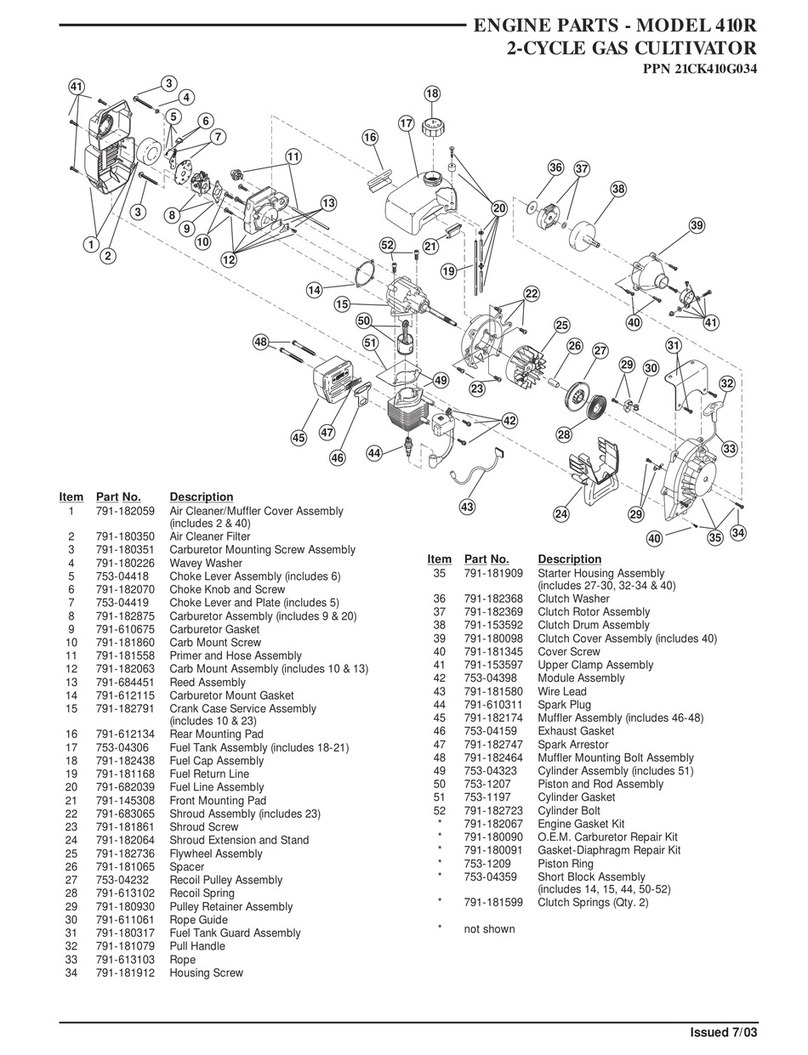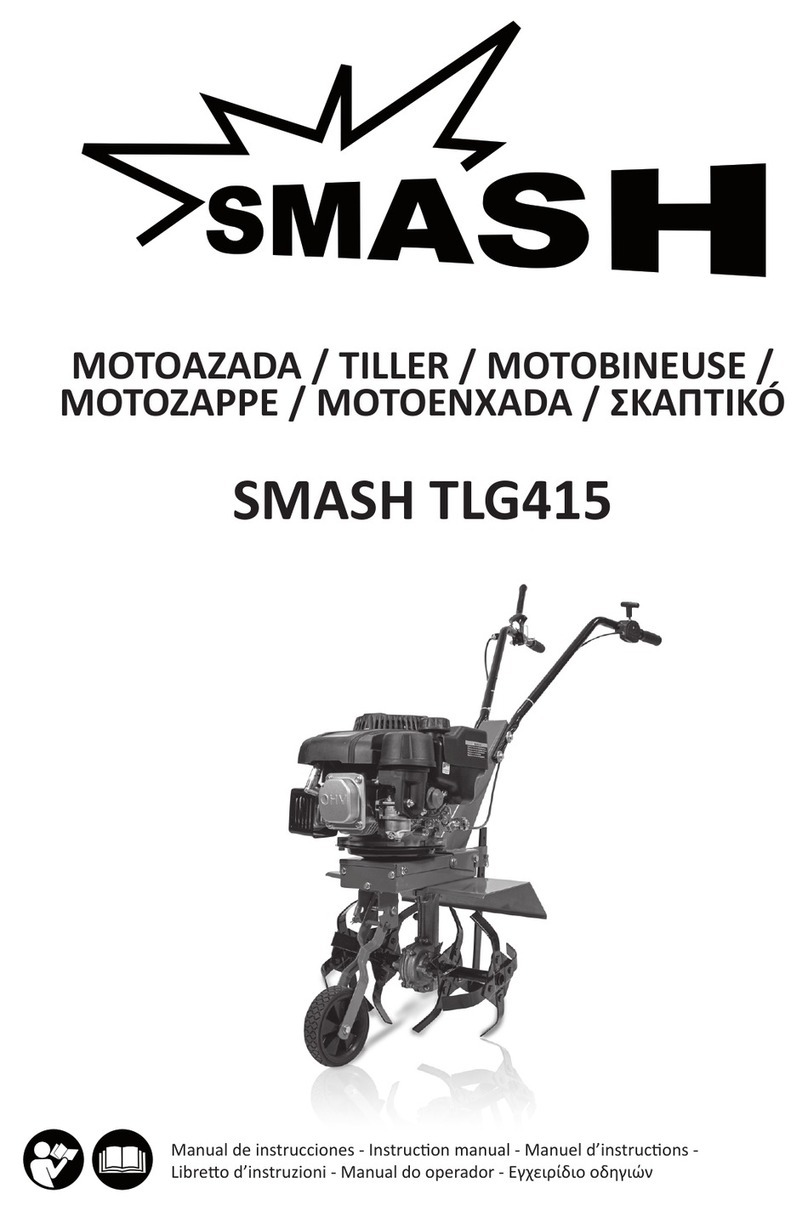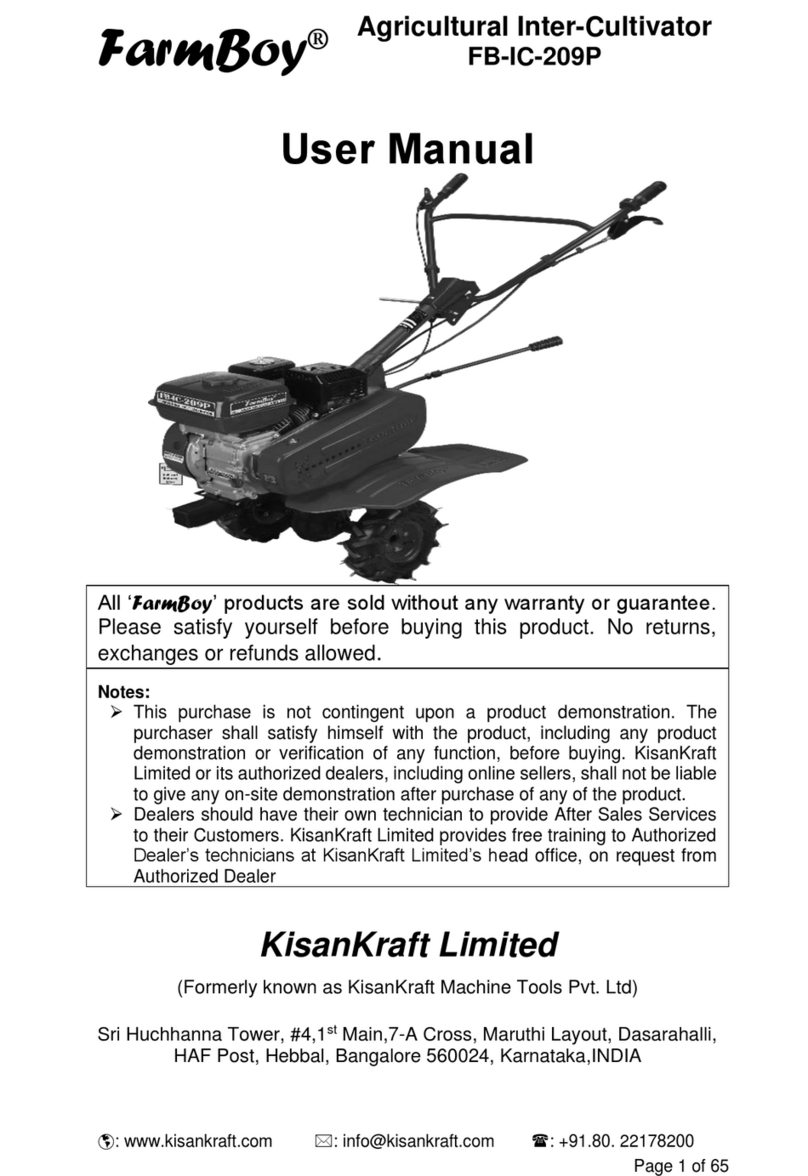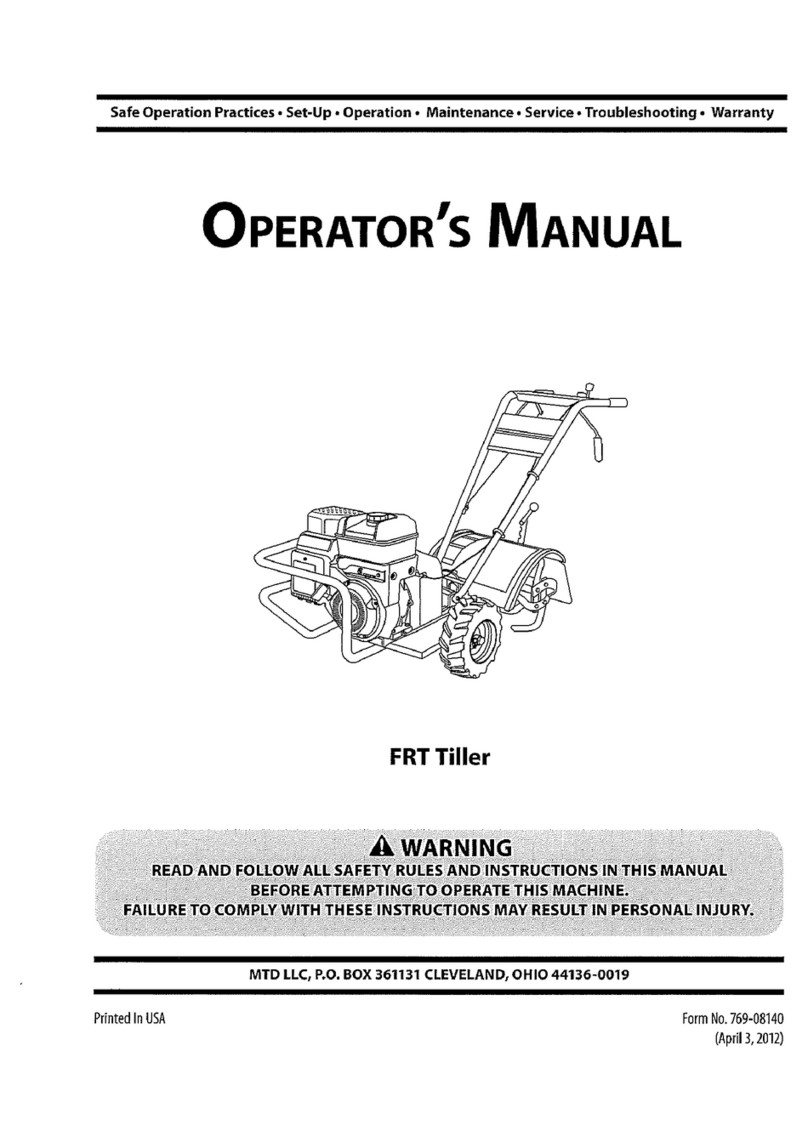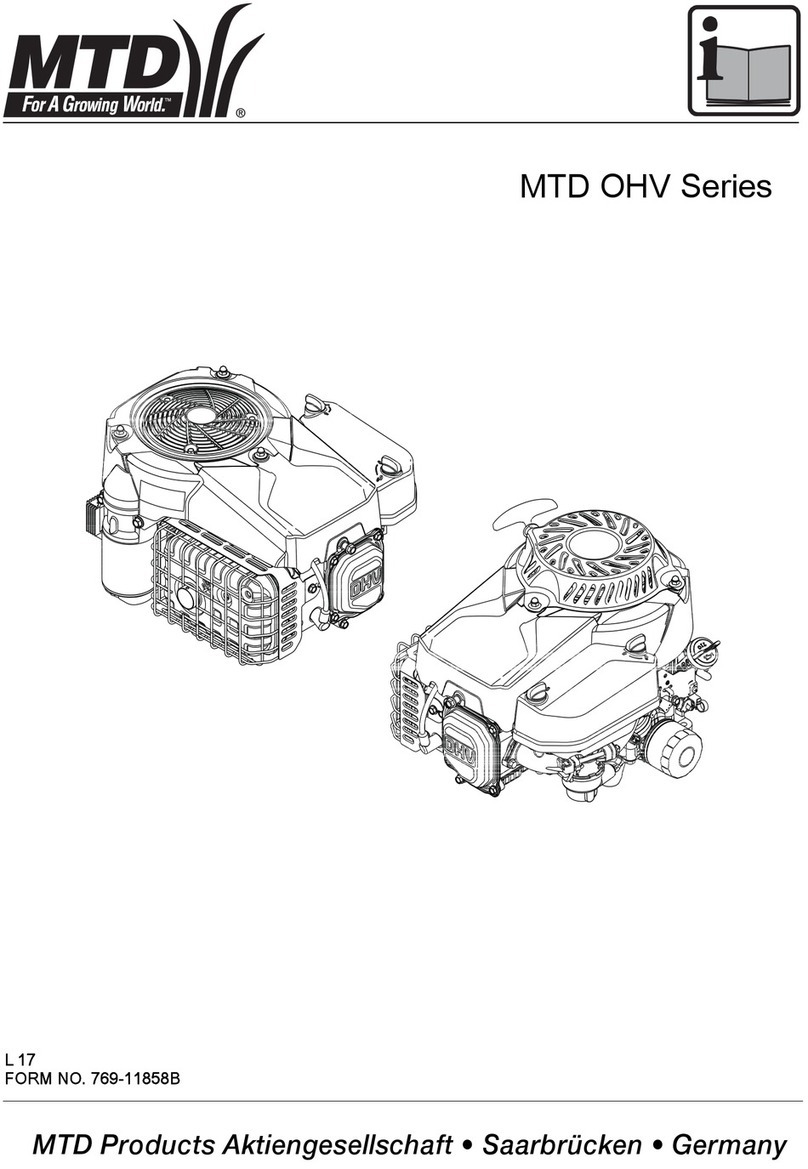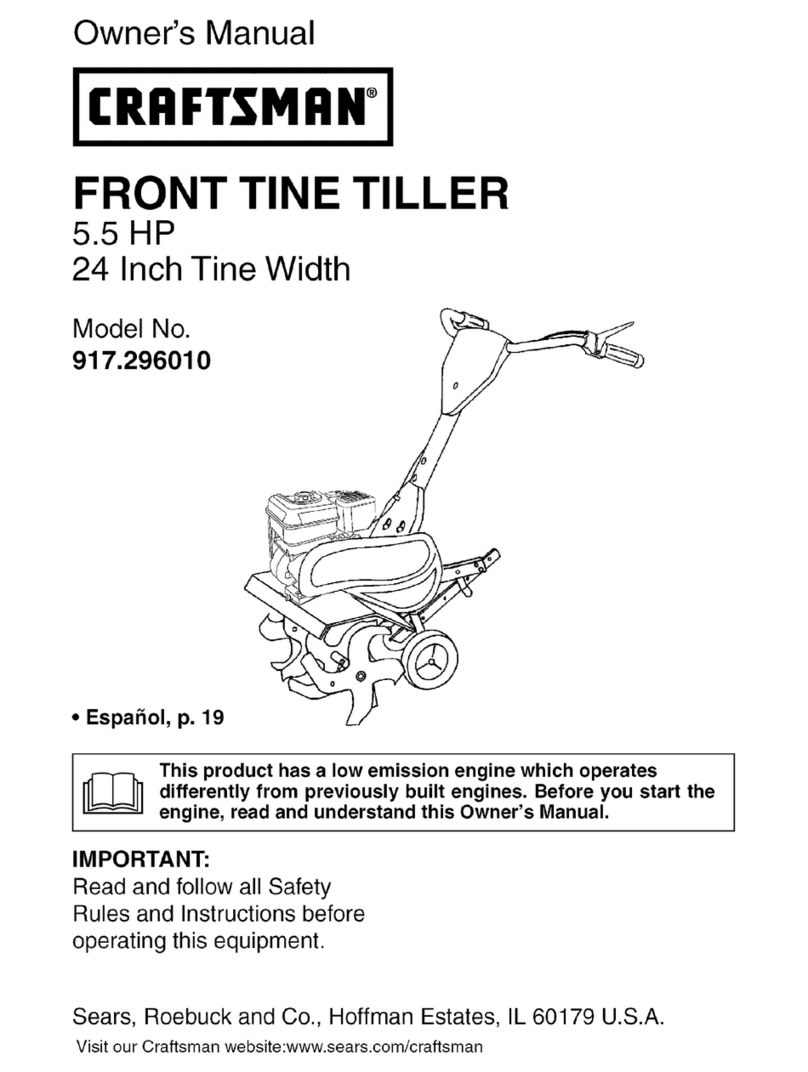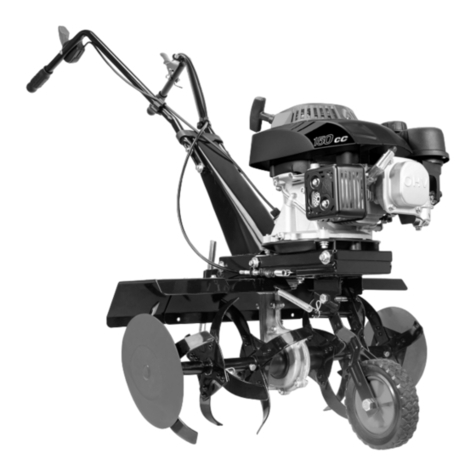Troy-Bilt OEM-290-101 User manual
Other Troy-Bilt Tiller manuals
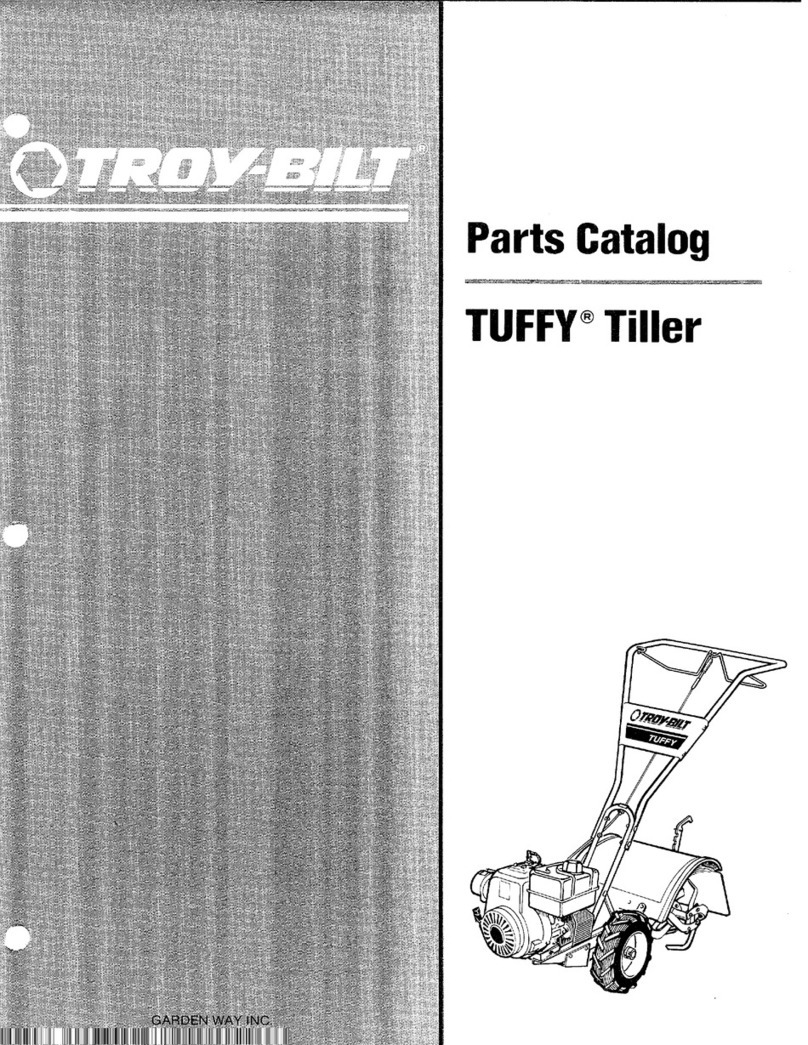
Troy-Bilt
Troy-Bilt 1900634A Instruction Manual
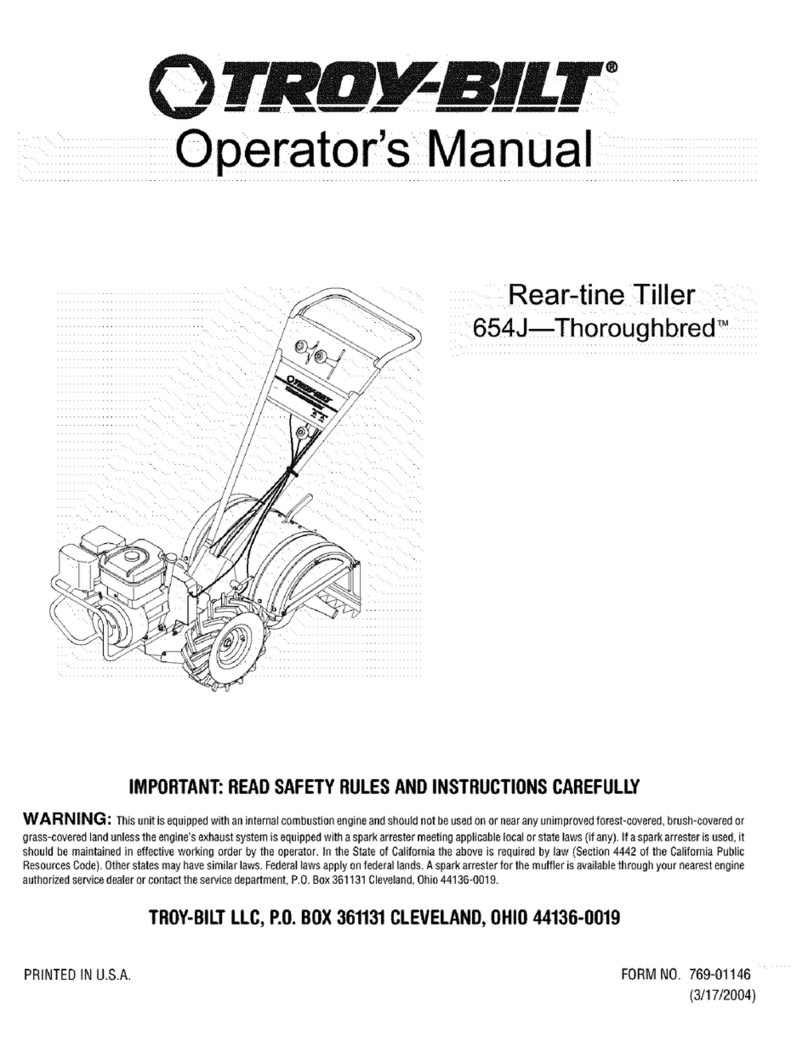
Troy-Bilt
Troy-Bilt 654J-Thoroughbred User manual
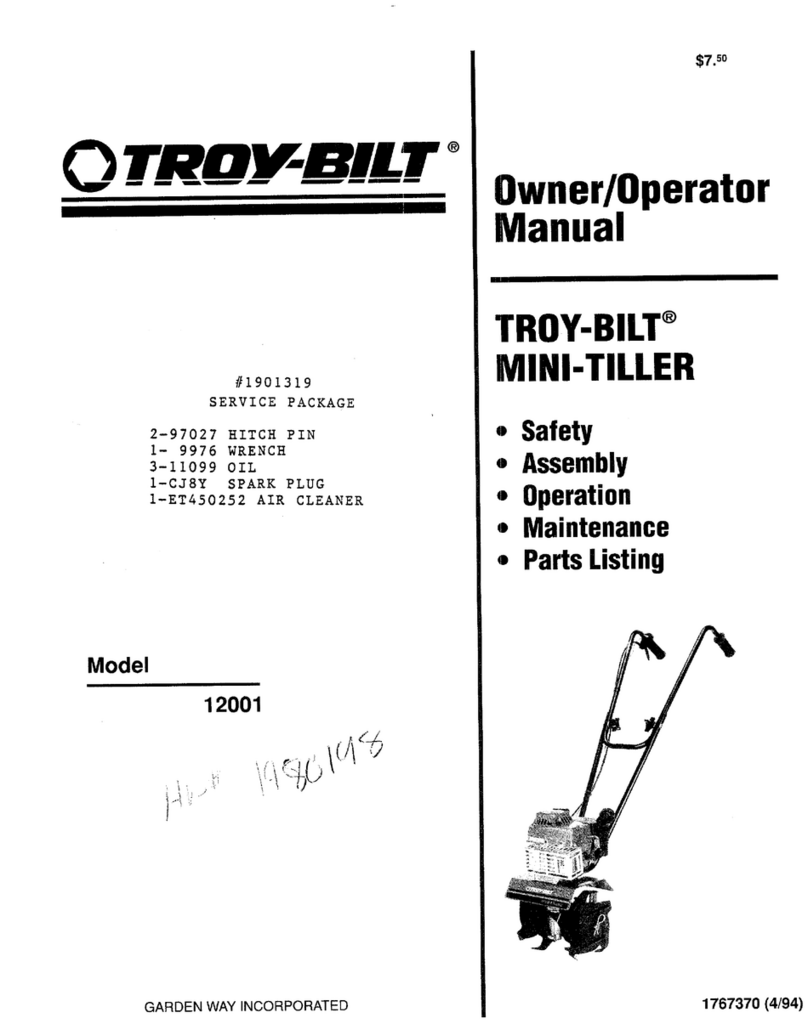
Troy-Bilt
Troy-Bilt 12001 Owner's manual
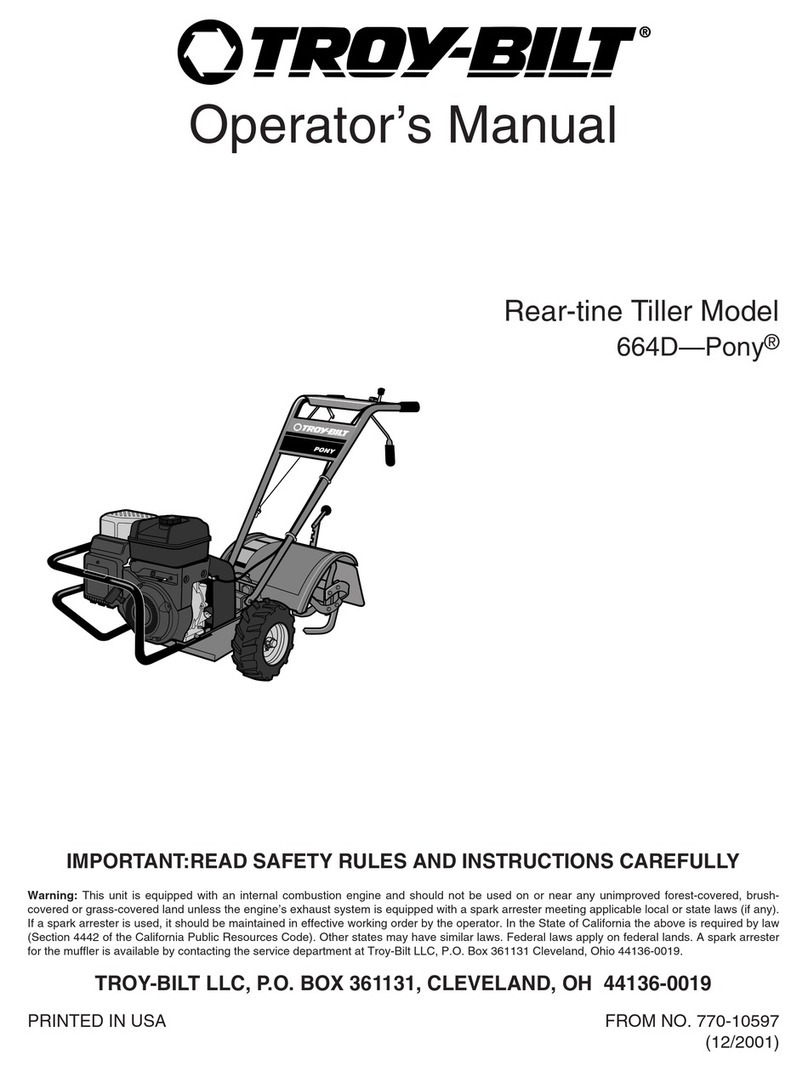
Troy-Bilt
Troy-Bilt 664D-Pony User manual
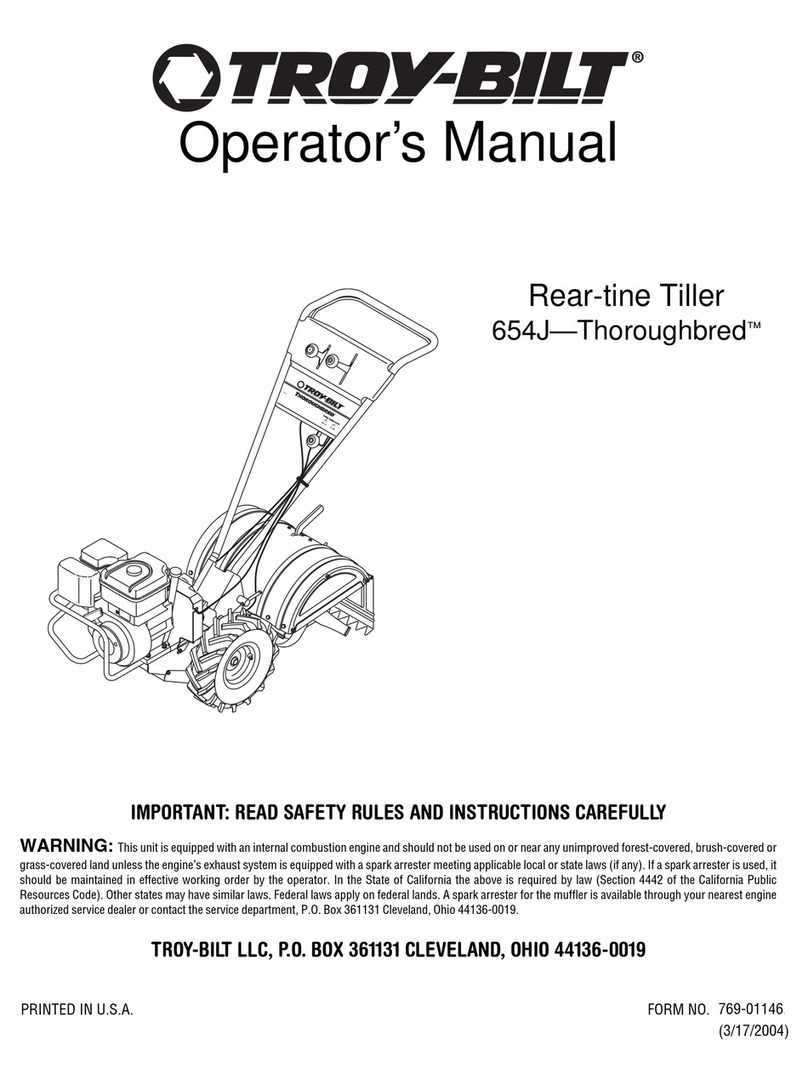
Troy-Bilt
Troy-Bilt Thoroughbred 654J User manual
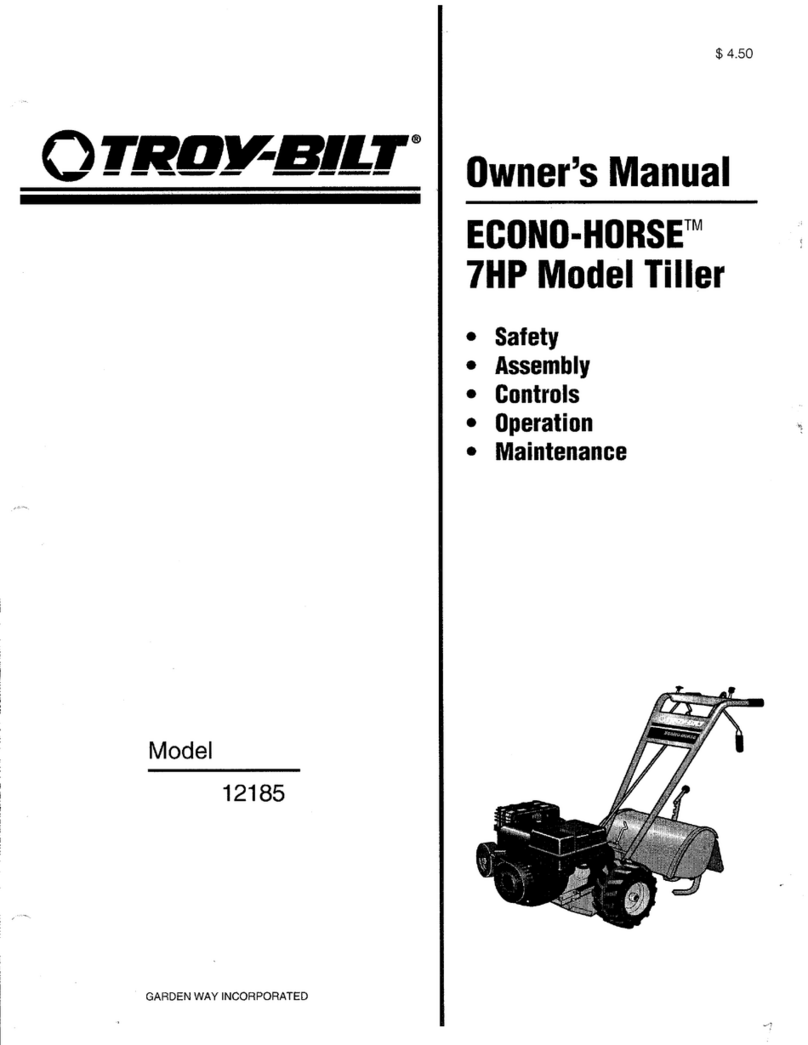
Troy-Bilt
Troy-Bilt Econo-Horse 12185 User manual
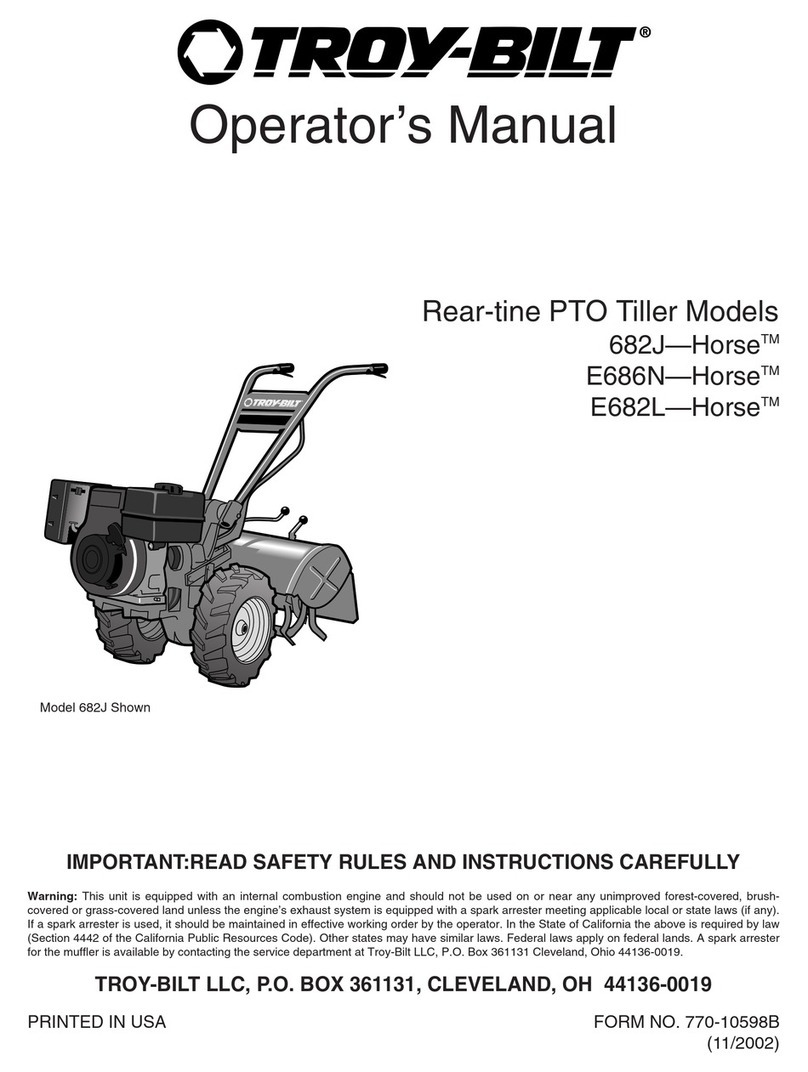
Troy-Bilt
Troy-Bilt 68J-Horse User manual
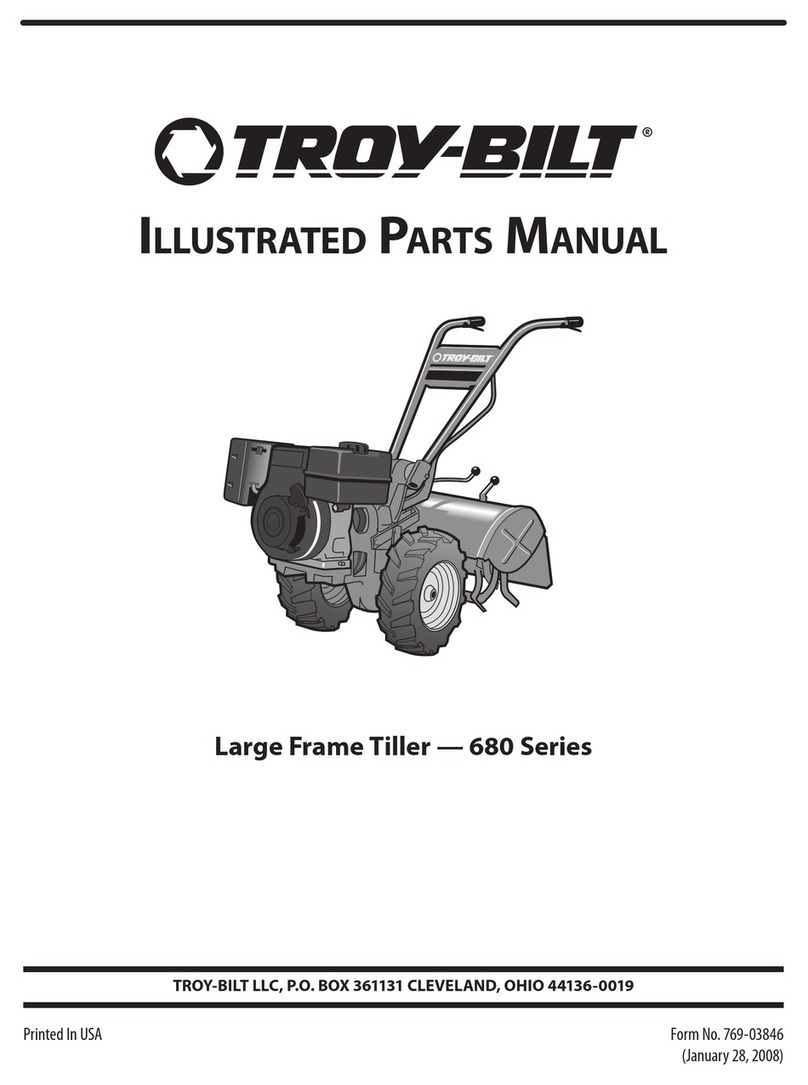
Troy-Bilt
Troy-Bilt 680 Series Setup guide
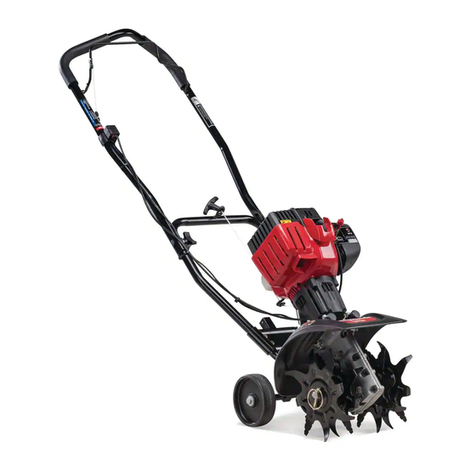
Troy-Bilt
Troy-Bilt TB225 User manual
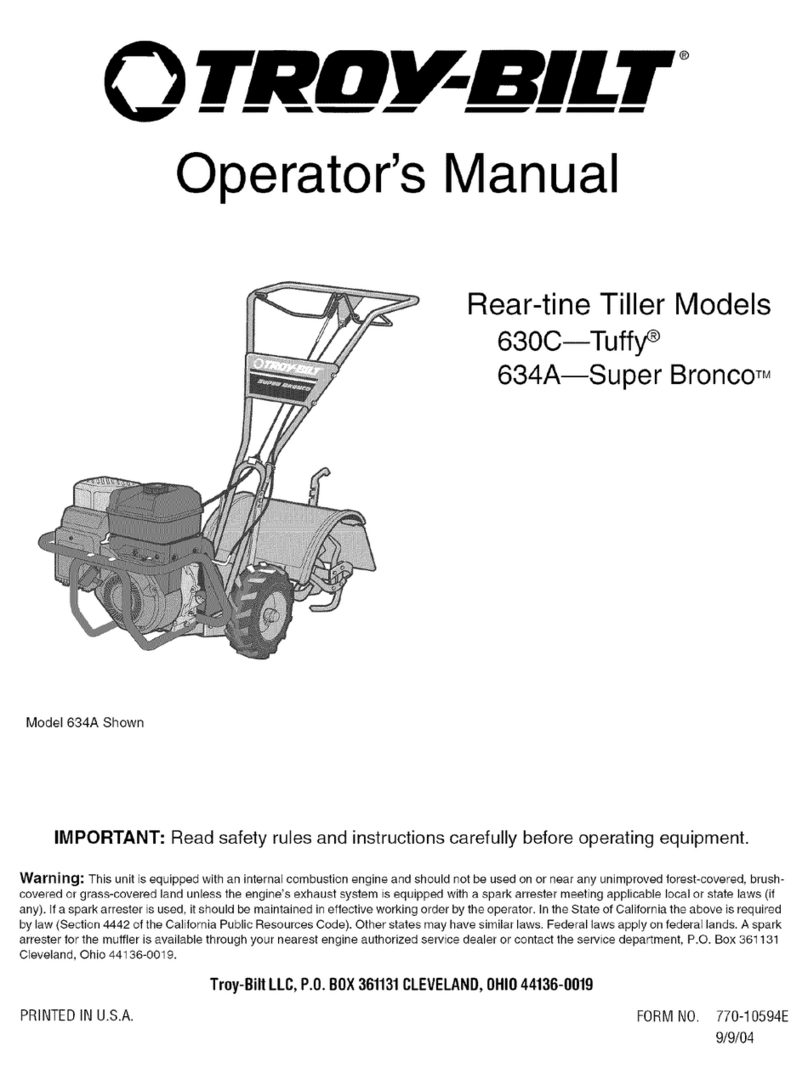
Troy-Bilt
Troy-Bilt TUFFY 1634A User manual

Troy-Bilt
Troy-Bilt TUFFY 630C User manual
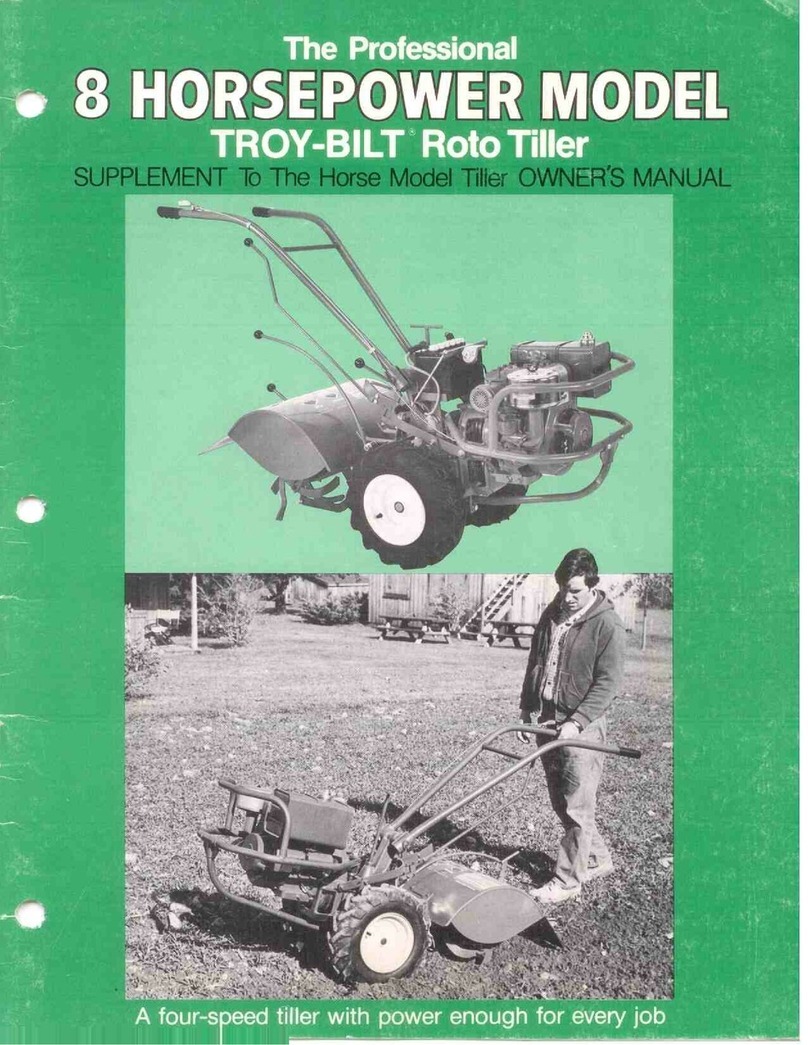
Troy-Bilt
Troy-Bilt 8 HP User manual

Troy-Bilt
Troy-Bilt 7HP Pony 12211 User manual
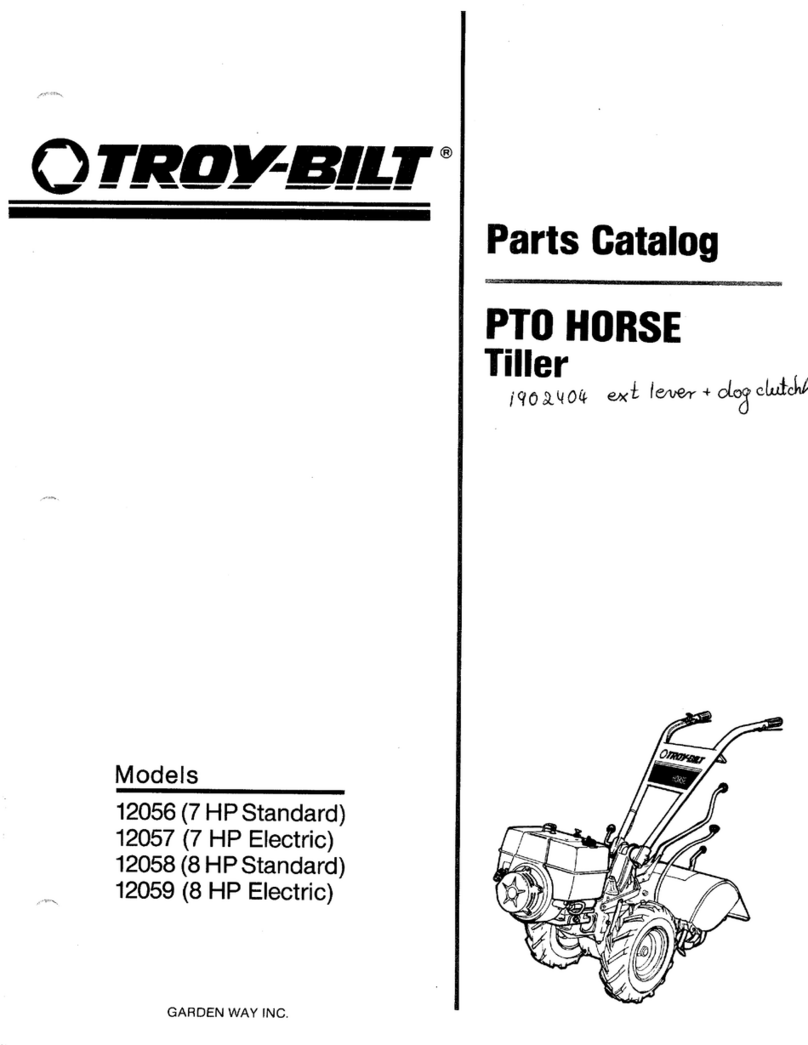
Troy-Bilt
Troy-Bilt 12056(7HP) Instruction Manual
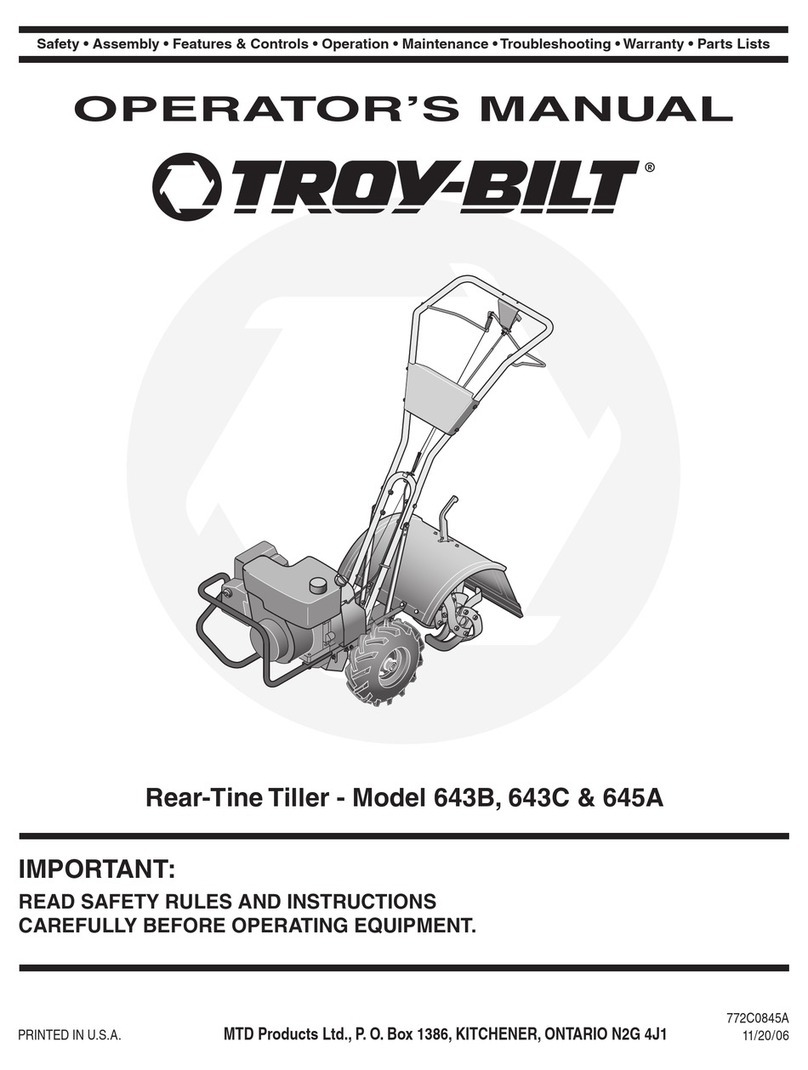
Troy-Bilt
Troy-Bilt 643B User manual
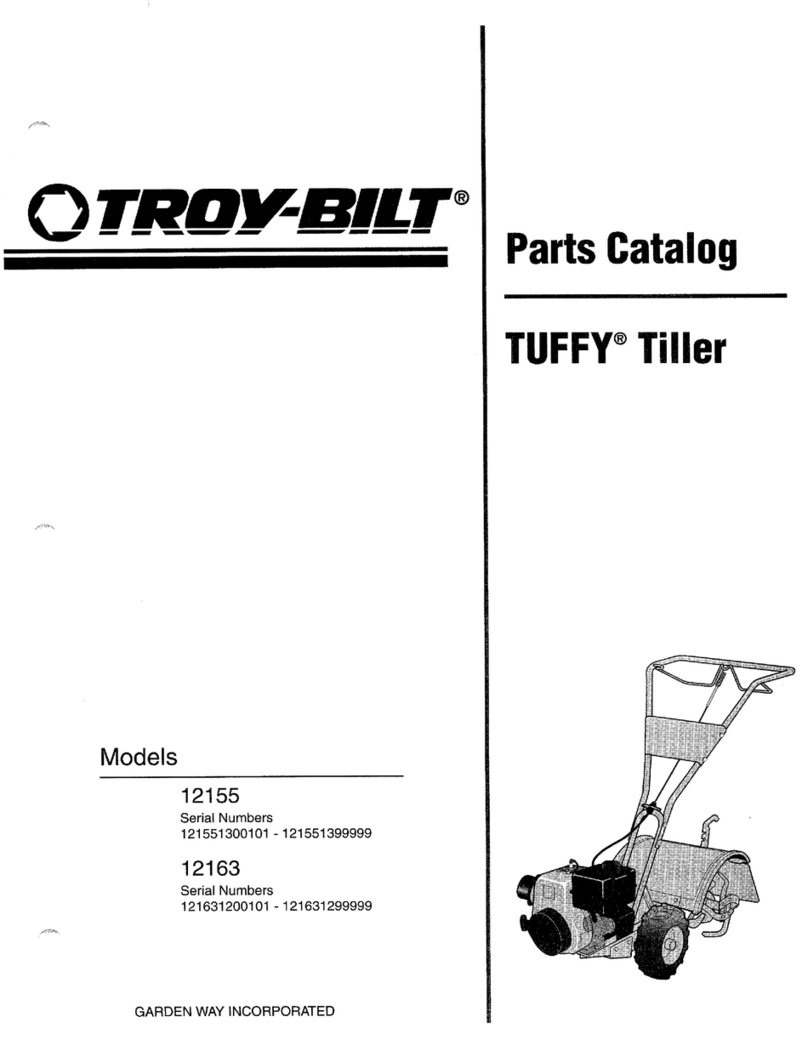
Troy-Bilt
Troy-Bilt 12165 Instruction Manual
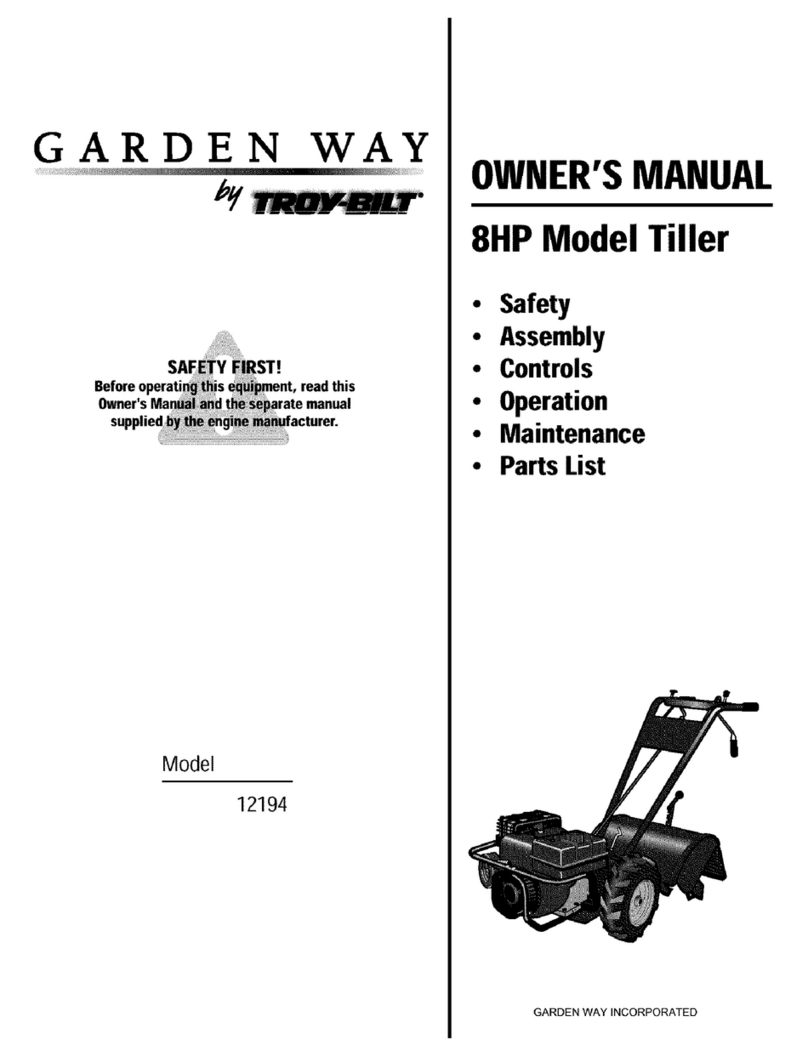
Troy-Bilt
Troy-Bilt Garden Way 12194 User manual
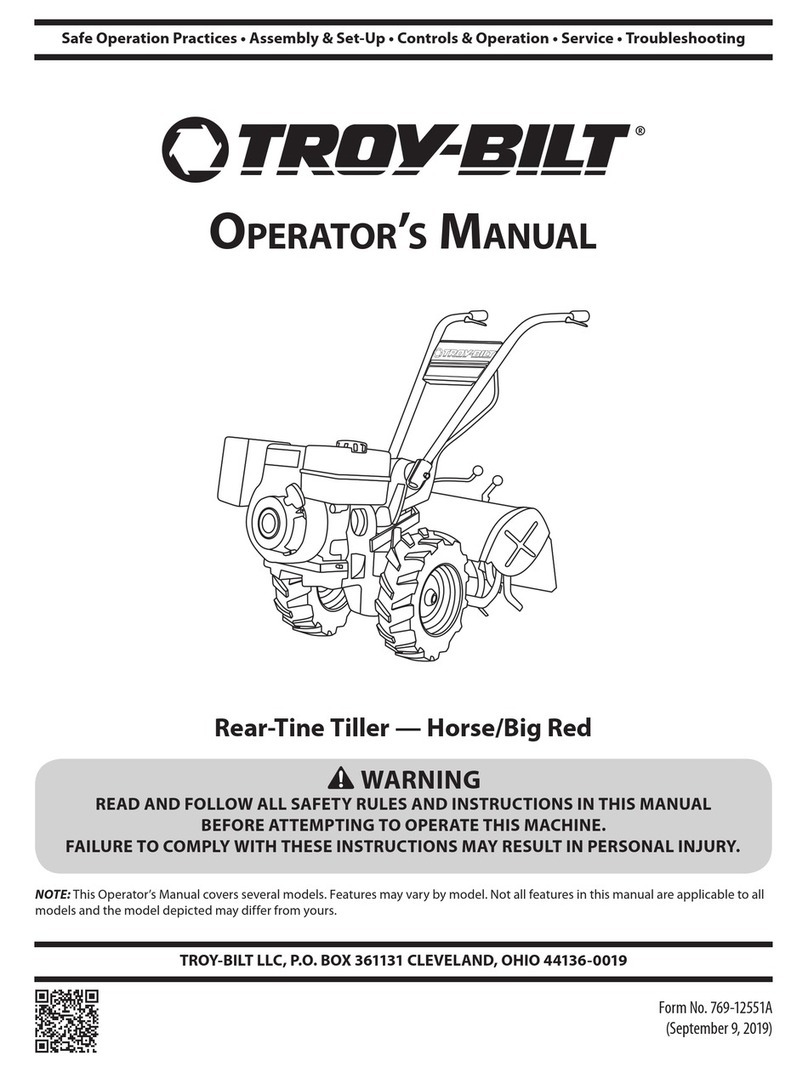
Troy-Bilt
Troy-Bilt 21AE682W766 User manual
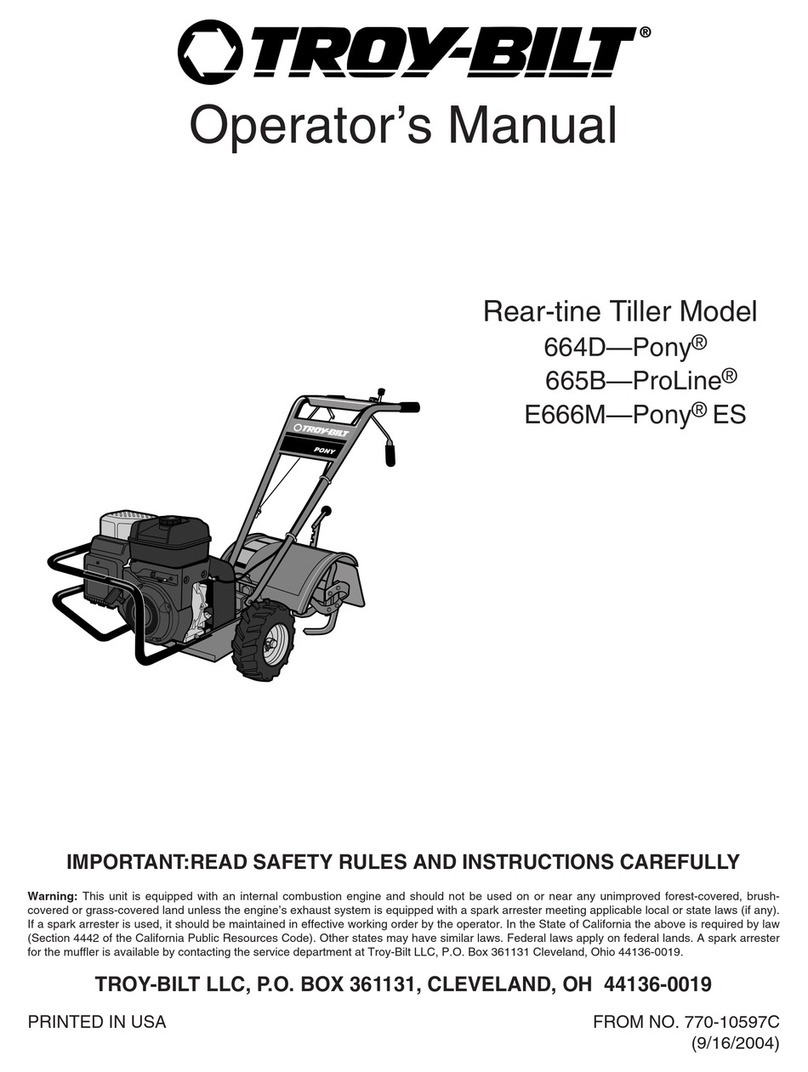
Troy-Bilt
Troy-Bilt ProLine User manual
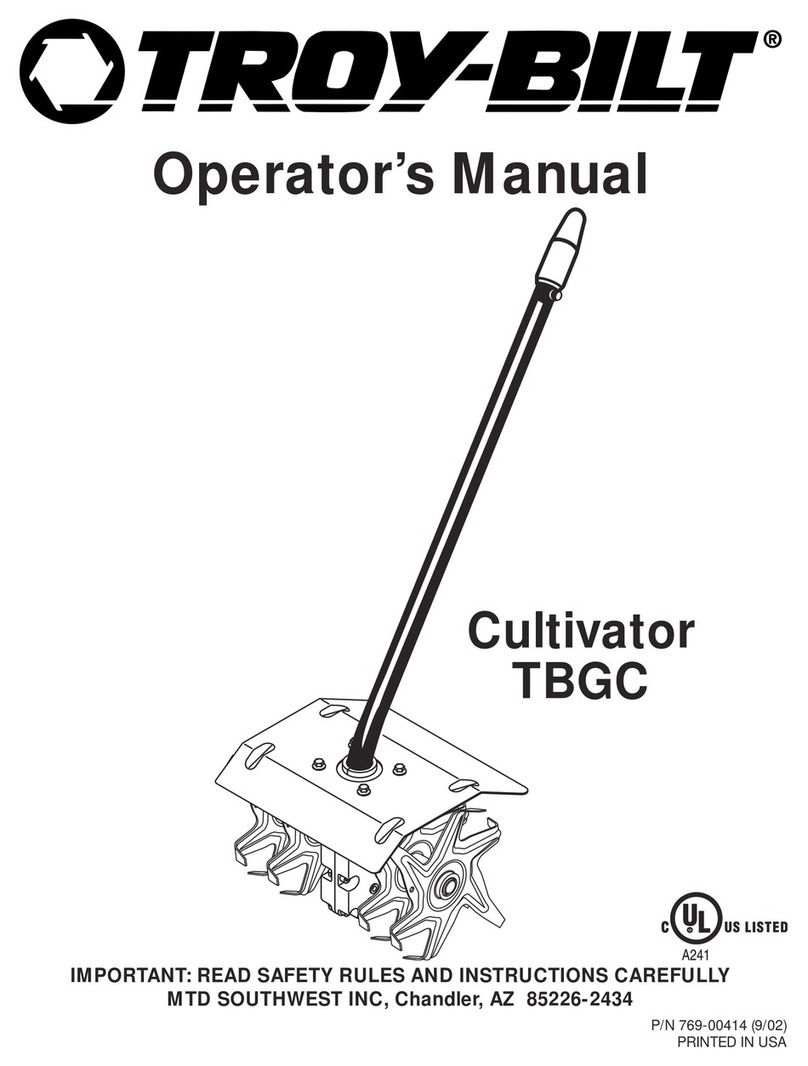
Troy-Bilt
Troy-Bilt TBGC User manual
Popular Tiller manuals by other brands
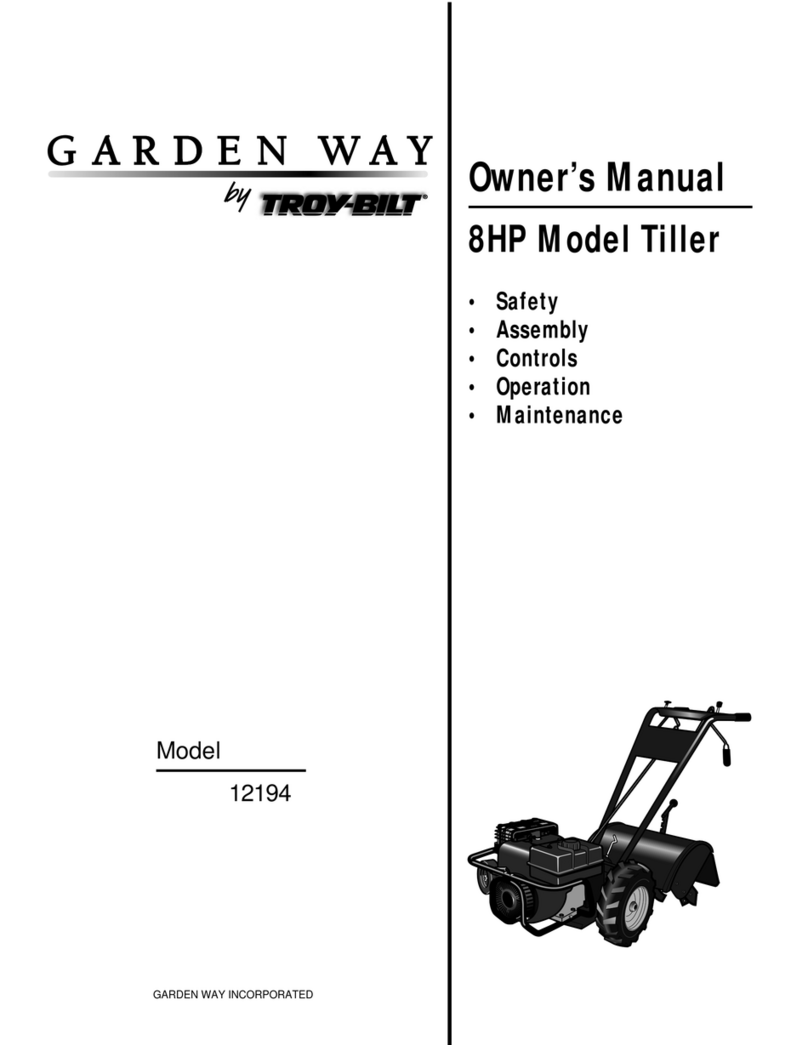
GARDEN WAY
GARDEN WAY 12194 owner's manual
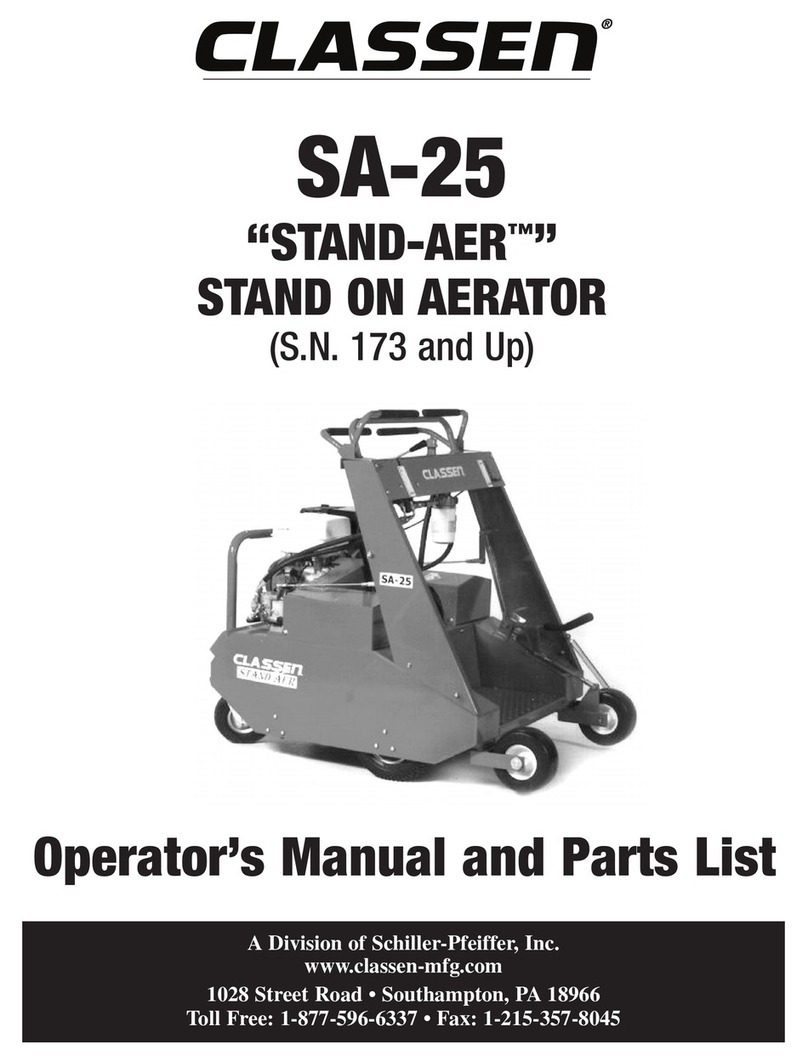
Classen
Classen STAND-AER SA-25 Operator's manual and parts list

Altrad
Altrad ATIKA BH 1400 N Original instructions, safety instructions, spare parts

DR
DR PILOT 2 Safety & Operating Instructions

AL-KO
AL-KO TL 1820 Instructions for use

breviglieri
breviglieri mekfarmer 120 Operating and maintenance

